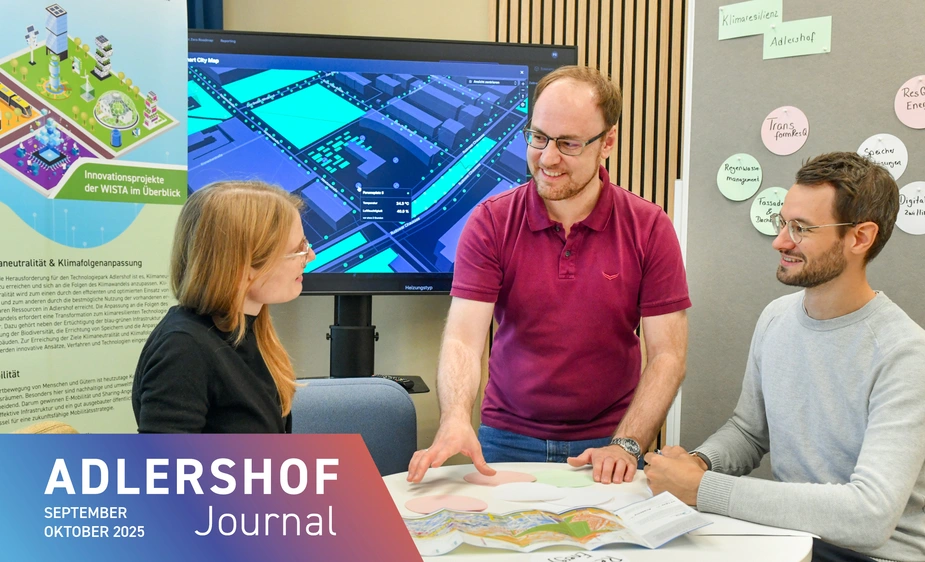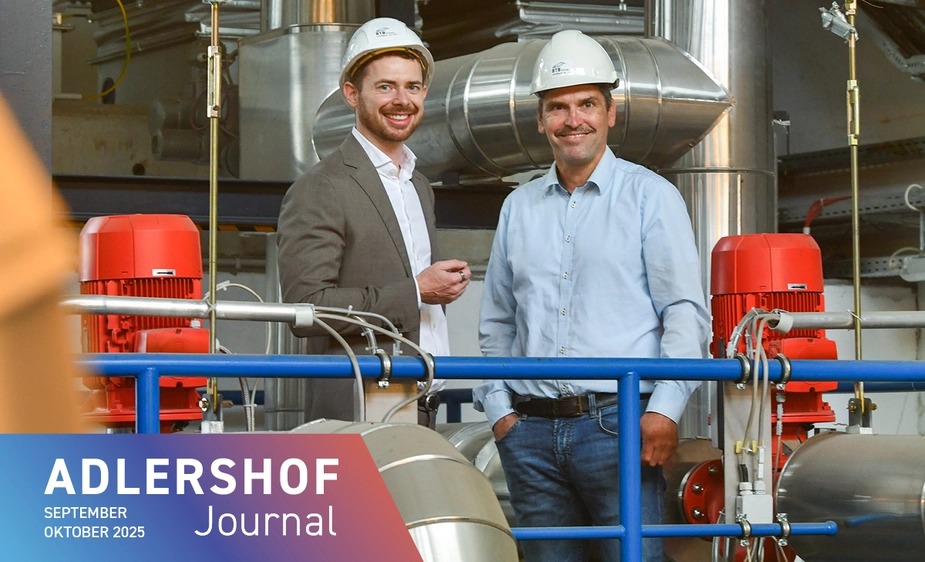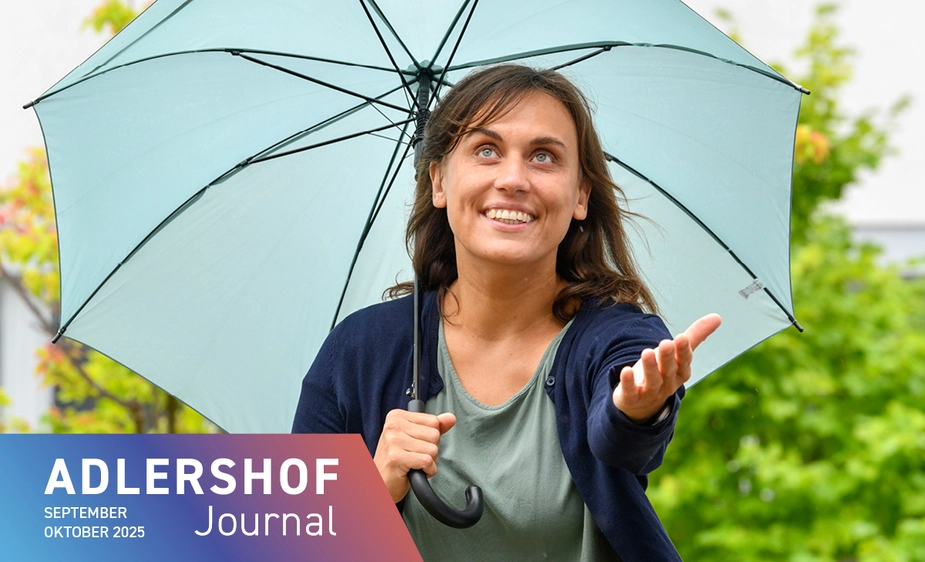A Blueprint for Climate-Resilient Technology Districts
A master plan for climate resilience is intended to prepare Adlershof, as well as other locations, for the future
Climate change is very much here and so it’s high time to prepare the technology park for the future. How exactly this will be done is currently being worked out with the support of WISTA, with a master plan being developed from which other locations will also benefit.
Temperatures this year are once again setting new records, as we are plagued by droughts followed by heavy rainfall. “The five hottest years in Adlershof since weather records began have all been in the last six years,” says Stefan Bschorer from WISTA’s Innovation Team. “One thing’s for certain: it’s getting warmer and warmer at an alarming rate.” He coordinates projects aimed at making the technology location more climate-resilient.
“The aim is to develop a master plan which outlines the measures we must take to ensure that Adlershof remains a great place to live, study, and work in the future,” explains Bschorer. “To achieve this, we not only need to determine how to make our energy supply climate-neutral and resilient in the future, but also, for example, how to regulate the temperature at the site or manage rainwater.” A technology park like Adlershof thrives on people coming together to be creative as well as for the necessary laboratory work.
Two research projects on climate adaptation aim to show how this can be achieved without restrictions in the future. The framework is provided by the “Transformation to a Climate-Resilient Technology Park (TransformResQ)” project. The second project, called “Resilient Energy System for Technology Parks (ResQEnergy)”, addresses the future energy supply in Adlershof. Both projects are being funded by the German Federal Ministry for Economics and Energy (BMWE) with a total of 2.8 million euros. The “Master Plan for a Climate-Resilient Technology Park” is to be completed by the end of 2027 and will also be applicable to other comparable areas.
The project partners are the Technical University of Berlin, the Neubrandenburg University of Applied Sciences, the Reiner Lemoine Institute in Adlershof and the local energy supplier, BTB GmbH Berlin.
If the measures outlined in the master plan are implemented from 2028 onwards as planned, this will include improvements to the “blue-green infrastructure”, which involves the better use of rainwater and more shade-providing, cooling greenery. “Storage facilities play a vital role in enabling a more flexible use of renewable energies,” emphasises Bschorer.
BTB has, in some ways, already made an advance investment here.
“Our aquifer storage facility is an integral part of Adlershof’s future heat supply,” says Sebastian Fasbender from the GeoSpeicherBerlin project team, which is involved in WISTA’s climate resilience project. Aquifers are water-bearing layers in the subsoil which can be used as a source of heat and as heat storage. “Together with our partners, the GFZ Helmholtz-Zentrum für Geoforschung and the Technical University of Dresden, we are further developing the proven aquifer storage technology so that in future, high temperatures can also be stored underground and made available to the district heating network,” says Fasbender.
GeoSpeicherBerlin should be operational by the end of 2027 and will have a heat capacity of around 30 gigawatt hours at a depth of around 400 metres. In summer, the surplus renewable heat from the Neukölln biomass plant will be stored alongside other heat sources in future. In winter, it will be retrieved using a large-scale heat pump system which shall replace a share of the fossil fuels used in BTB’s district heating supply. “There can be no climate resilience without storage,” emphasises Fasbender. “If the geological conditions are right, aquifer storage is an exciting option thanks to its high storage capacity and low space consumption.”
But the question of how much energy the neighbourhood will require in future, where it will come from, and what type it will be still remains. The Reiner Lemoine Institute (RLI) is currently gathering data and planning scenarios on this issue. “We are not simply determining the present electricity, heating, and cooling requirements, but also creating an energy system model for 2050 that is climate neutral,” explains Mascha Richter, Head of Energy Systems Transformation at the RLI.
Among other things, this takes into account continued growth in the neighbourhood, increasing cooling requirements as a result of global warming, local climate forecasts, and changes in people’s usage behaviour. “The key questions are how much renewable energy the site can contribute from which sources and which storage technologies can support the increased use of renewables,” says Richter. Even though it’s still too early for concrete results, Richter expects that more photovoltaics, ice storage, heat pumps, and possibly aquifers will certainly be part of the future climate-resilient technology park. Two river water heat pumps at the BTB site in Schöneweide are already playing a role in the climate-neutral heat supply. “These extract heat from the Spree river, which flows directly past our biomass plant, and feed it into the hot water circuit of BTB’s approximately 170-kilometre-long district heating network,” explains Maximilian Zoschke, an expert in future technologies and Head of Decarbonisation at BTB. The pioneering project is part of two innovative geothermal power systems which are, to date, unique in the region. “Geothermal power, aquifer storage, river water heat pumps – these are all innovative heating technologies which are making heating the area more flexible, sustainable, and therefore more resilient overall for the people of Adlershof and Berlin,” underlines Zoschke.
Chris Löwer for Adlershof Journal


